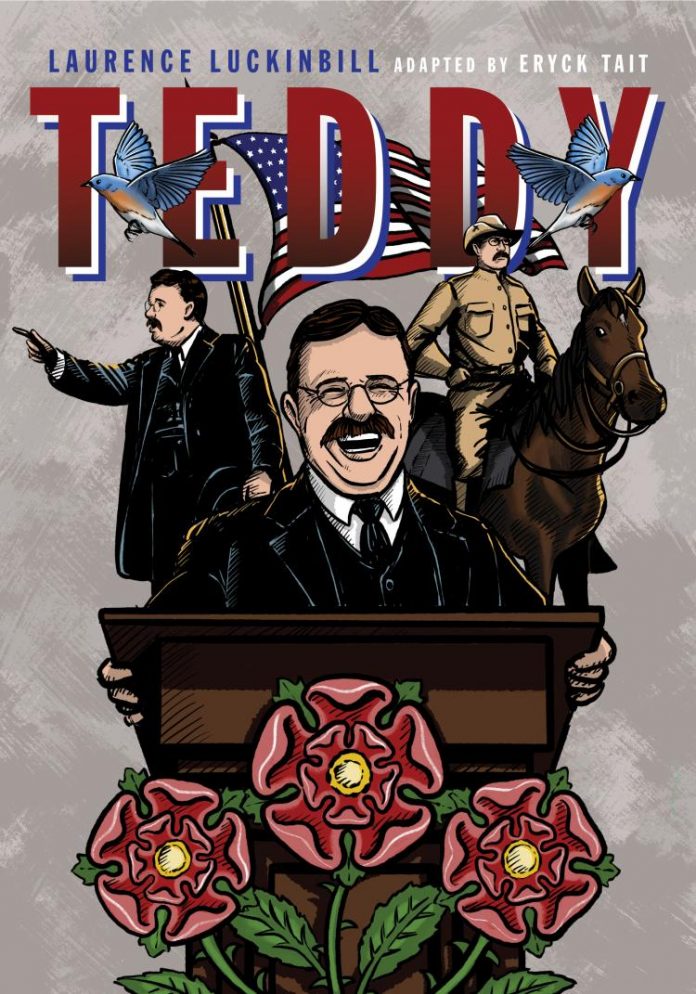
Teddy. By Laurence Luckinbill. Illustrated by Eryck Tait. Naval Institute Press, Annapolis, 2021.
Reviewed by Greg Swinden
I have always been a ‘fan’ of Teddy Roosevelt for his dogged determination, forthright manner and an unrestrained desire to do good for his country and its people. So I was somewhat surprised, when this book arrived for review, to find what I would describe on first sight as a ‘comic book’. That however would be to denigrate what is an interesting, although at times quirky history, of one of the 20th Century’s greatest statesmen.
The author is American octogenarian actor, playwright and director Laurence Luckinbill with the artwork produced by freelance artist and designer Eryck Tait of New York City. The story line, after a little bit of additional research, follows a July 1918 speech made by Teddy Roosevelt; at the Republican State Convention at Saratoga, New York.
Only the day before he had received news that his youngest son Quentin, who was an aviator serving with US forces on the Western Front was missing; and later listed as killed in action. The newspapers of the day were not yet aware of this tragic news and Roosevelt, in his usual style, ‘pushed on’ to deliver the speech which is part a narrative of why he entered politics, part his love of his family and part chastising then President Woodrow Wilson for failing to declare war on Germany earlier and thereby bringing a swifter end to the conflict and thus saving hundreds of thousands more lives. There was obviously no love lost between these two men.
After my second read of the book (it only takes an hour or so per read), and perusing some others texts about Teddy Roosevelts life, it became clearer that the books narrative follows the speech closely but in doing so it becomes only a partial biography of ‘Teddy’. There is much of his early family life including the untimely death of his first wife following the birth of their first child, his early days in politics and second marriage, military service in Cuba during the Spanish American war (with indications this conflict was manufactured by the US to remove Spain from Cuba and Puerto Rico), his rise to the Presidency following the assassination of President William McKinley and what Roosevelt called his toughest fight of all; the construction of the Panama Canal. His love for his family is evident throughout the book.
There are however significant gaps if the reader is looking for a full biography of this man. The creation of a strong US Navy is described but the dispatch of the Great White Fleet on its world cruise is conspicuously absent as is much concerning his attempts to become President again in 1912. The assassination attempt, also in 1912, where a folded 50 page speech in his jacket pocket reduced the penetrating power of the bullet is barely mentioned
Overall it’s an interesting, informative and a short read that is well suited for younger readers wanting to know more about ‘Teddy’– but those looking for a complete biography of this influential US statesmen will need to look elsewhere.



